Gastropods
General Gastropod Morphology
(Section through a modern Whelk)
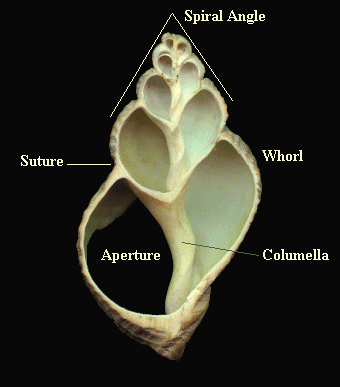
This is, of course, a very general picture. The spiral angle can vary considerably from about 10 degrees in Turitella (very pointy) to almost 180 degrees in Planorbis (almost flat). If the whorls grow apart too quickly then the columella is not formed and the shell is termed 'perforate'. If a columella is present the shell is termed 'imperforate'. Many other factors result in shells of various shapes and sizes.
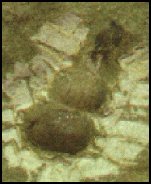
Gastropods have long history. The specimen shown here is the internal mould of a small (less than 1cm) Gastropod from the Silurian rocks near Ludlow. At that point in time they were an insignificant part of the overall fauna but as time passed their role became much more important.
The Portland Screw, a turreted gastropod.
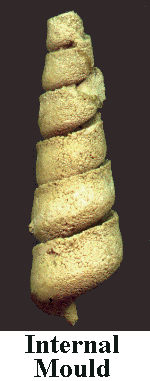

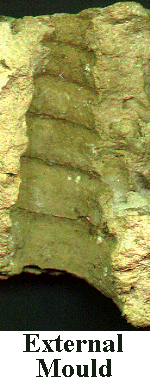

As with most of the fossils found on the Isle of Portland this specimen only survives as an external and internal mould. The actual shell has been disolved away by percolating water. This is an example of Aptyxiella Portlandica a turreted gastropod. These are very common in the 'roach' beds above the valuable Portland Stone. The example shown comes from the Upper Jurassic. ( size 4cm)
The Eocene beds on the north coast of theIsle Of Wight are particularly prolific in Gastropods.
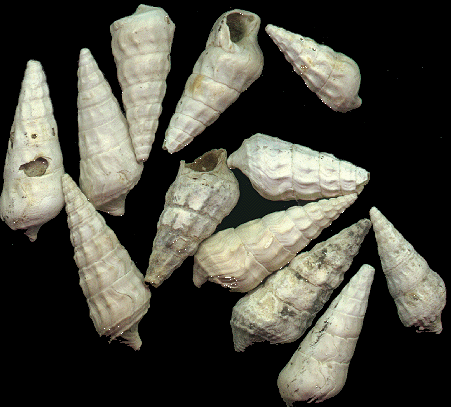
Just to the east of Alum Bay there is a mass of crumbling sandstome that has been eroded from Heddon Hill. This is a fresh water deposit and contains the remains of many gastropods. The image above is of the common Batillaria concava. (size 2cm)
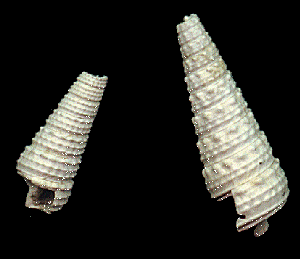
The two specimens in this image are much less common. The shell on the left is Potamides vagus and the one on the right is Tympanotonos funatus. (size 1.5cm)
There are also the shells of snails that would not look out of place munching on the plants in your garden.
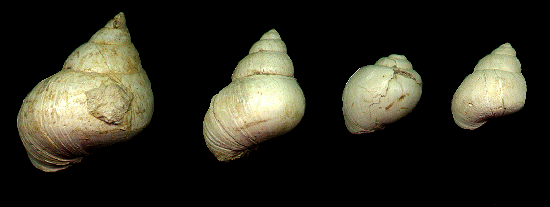
From left to right they are Viviparous angulosus, Viviparous lentus, Globularia patula and Globularia grossa. (size 1.5 - 2cm)
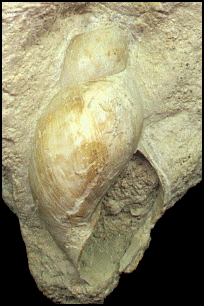
As can seen from the items shown above, many of the specimens that are found in this area are fairly clean and require little work other than a scrub with a toothbrush. There are others that are still mostly surrounded by rock and need a bit more effort. This was the case with this specimen of Galba longiscata. (size 2cm)












